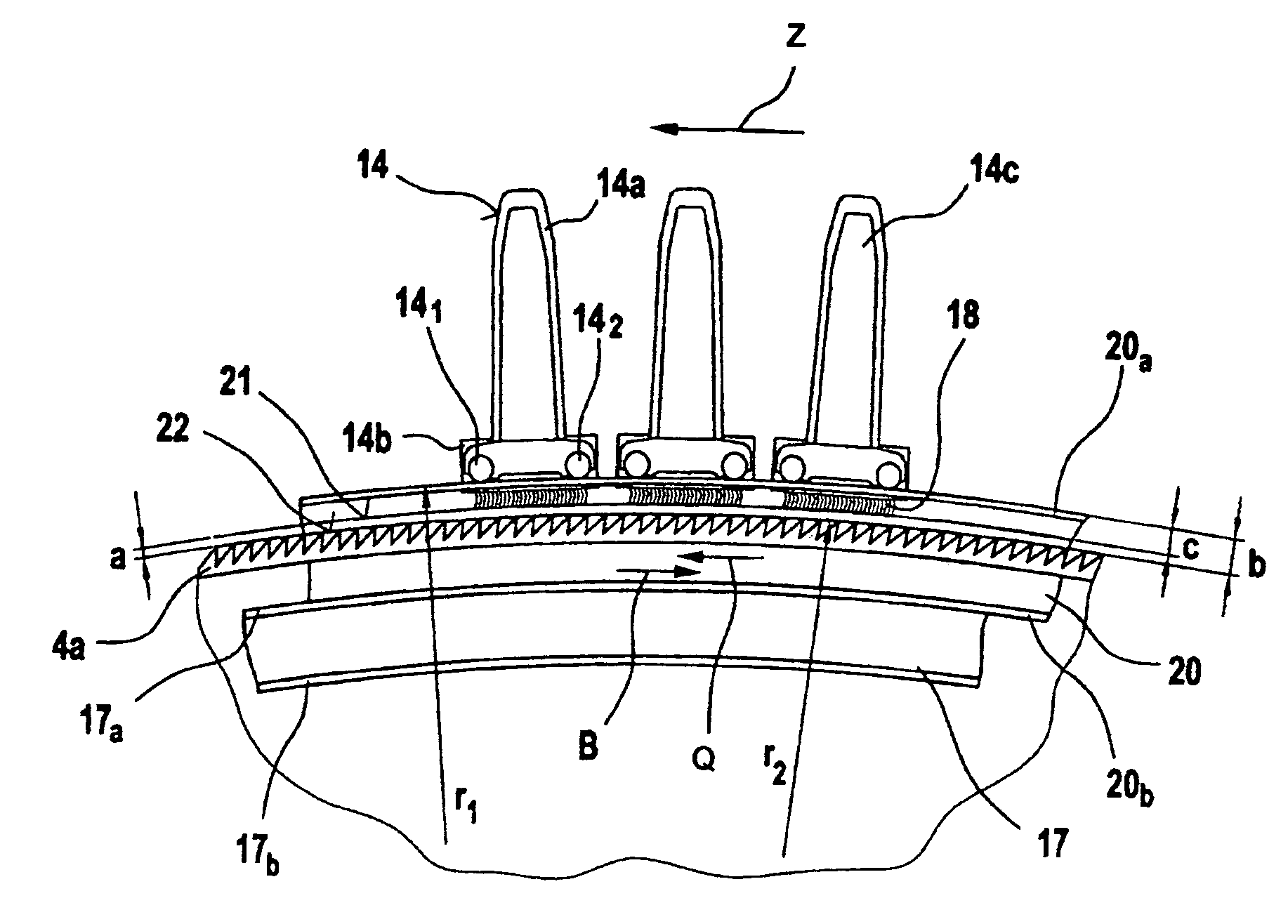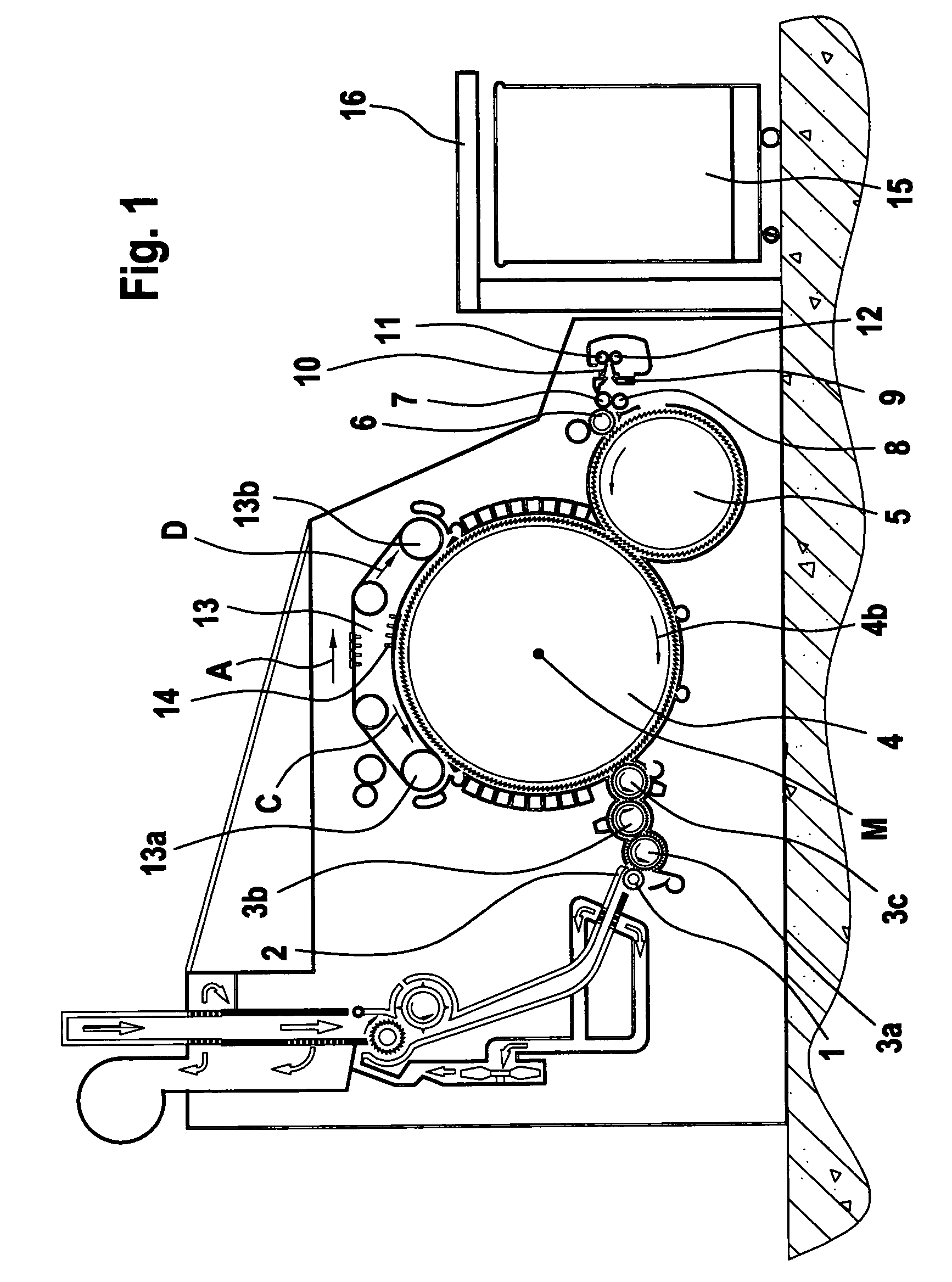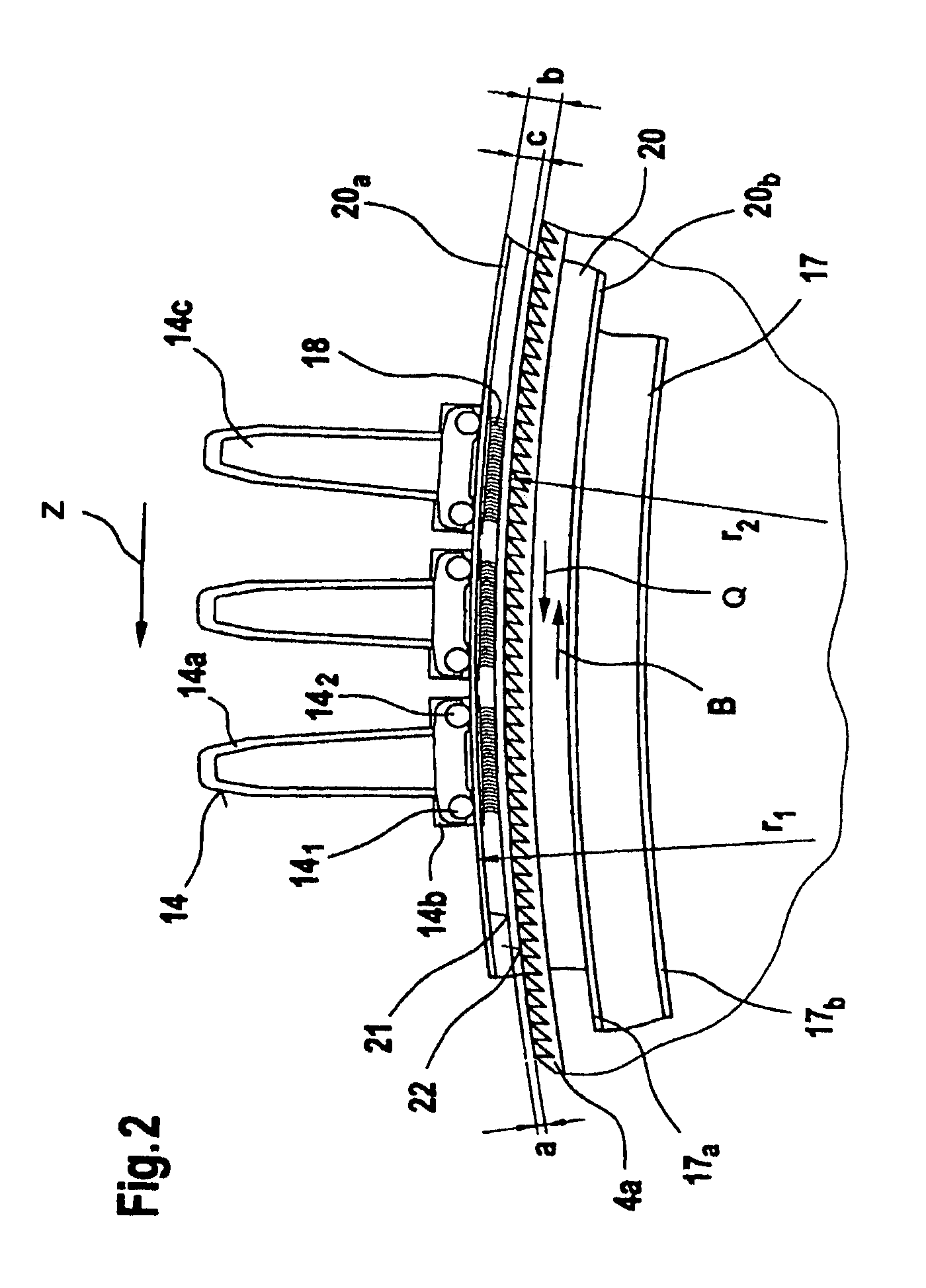Card flat bar for a carding machine
a carding machine and flat bar technology, applied in the field of carding machine flat bar, can solve the problems of limited technology of ground-down clothing tip grinding, time-consuming and labor-intensive processing, and grinding to a level finish, and achieve the effect of reducing the number of grinding operations
- Summary
- Abstract
- Description
- Claims
- Application Information
AI Technical Summary
Benefits of technology
Problems solved by technology
Method used
Image
Examples
Embodiment Construction
[0030]With reference to FIG. 1, a carding machine, for example, a TC 03 card made by Trutzschler GmbH & Co. KG of Monchengladbach, Germany, has a feed roller 1, feed table 2, licker-ins 3a, 3b, 3c, cylinder 4, doffer 5, stripping roller 6, squeezing rollers 7, 8, web-guide element 9, web funnel 10, take-off rollers 11, 12, revolving card flat 13 with card flat guide rollers 13a, 13b and card flat bars 14, can 15 and can coiler 16. The directions of rotation of the rollers are shown by respective curved arrows. The letter M denotes the midpoint (axis) of the cylinder 4. The reference numeral 4a denotes the clothing and 4b denotes the direction of rotation of the cylinder 4. The letter C denotes the direction of rotation of the revolving card flat 13 in the carding setting and the letter D the return transport direction of the card flat bars 14.
[0031]Referring to FIG. 2, on each side of the carding machine, a flexible bend 17 having several adjusting screws is secured laterally to the...
PUM
| Property | Measurement | Unit |
|---|---|---|
| flatness | aaaaa | aaaaa |
| height | aaaaa | aaaaa |
| distance | aaaaa | aaaaa |
Abstract
Description
Claims
Application Information
 Login to View More
Login to View More - R&D
- Intellectual Property
- Life Sciences
- Materials
- Tech Scout
- Unparalleled Data Quality
- Higher Quality Content
- 60% Fewer Hallucinations
Browse by: Latest US Patents, China's latest patents, Technical Efficacy Thesaurus, Application Domain, Technology Topic, Popular Technical Reports.
© 2025 PatSnap. All rights reserved.Legal|Privacy policy|Modern Slavery Act Transparency Statement|Sitemap|About US| Contact US: help@patsnap.com



